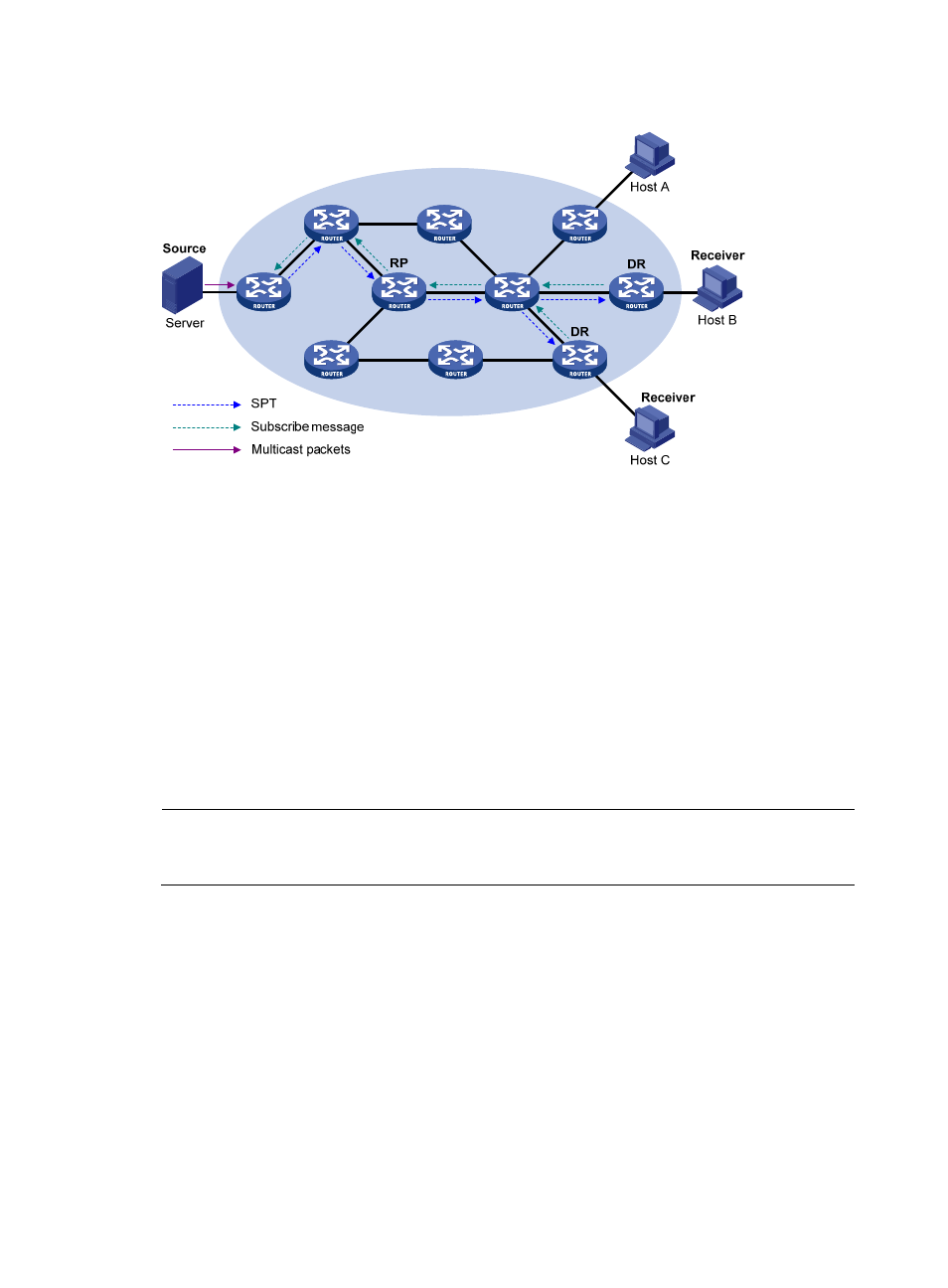Relationships among pim protocols – H3C Technologies H3C S10500 Series Switches User Manual
Page 156

141
Figure 51 SPT building in PIM-SSM
As shown in
, Host B and Host C are multicast information receivers. They send IGMPv3 report
messages to the respective DRs to express their interest in the information about the specific multicast
source S.
After receiving a report message, the DR first determines whether the group address in this message falls
into the SSM group range and then does the following:
•
If the group address in the message does fall into the SSM group range, the DR sends a subscribe
message for channel subscription hop by hop toward the multicast source S. An (S, G) entry is
created on all routers on the path from the DR to the source. An SPT is thereby built in the network,
with the source S as its root and receivers as its leaves. This SPT is the transmission channel in
PIM-SSM.
•
If the group address in the message does not fall into the SSM group range, the receiver-side DR
follows the PIM-SM process. The receiver-side DR sends a (*, G) join message to the RP, and the
source-side DR registers the multicast source.
NOTE:
In PIM-SSM, the term
channel refers to a multicast group, and the term channel subscription refers to a join
message.
Relationships among PIM protocols
In a PIM network, PIM-DM cannot run together with PIM-SM, BIDIR-PIM, or PIM-SSM. However, PIM-SM,
BIDIR-PIM, and PIM-SSM can run together. When they run together, which one is chosen for a receiver
trying to join a group depends, as shown in